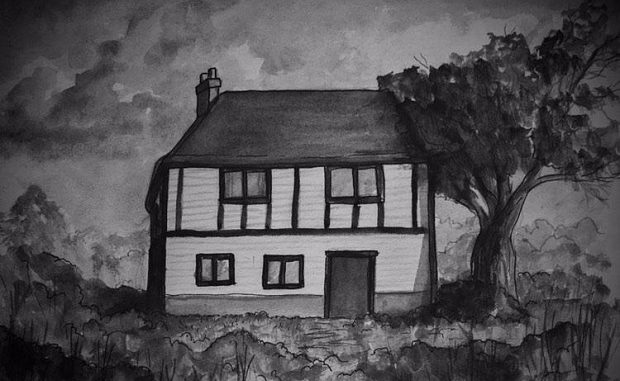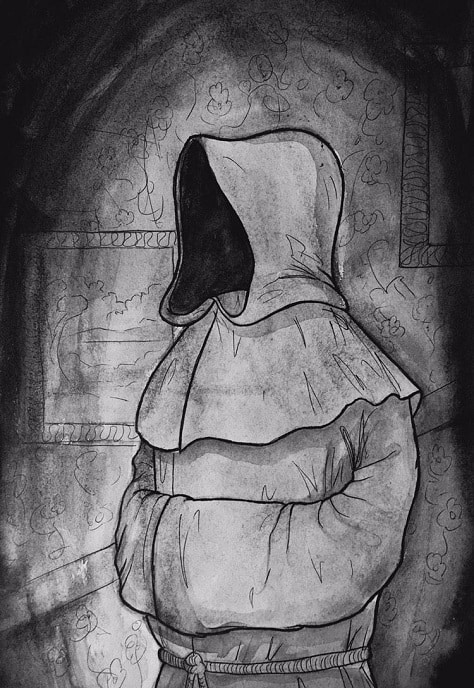
It was September 1926. The green of the trees were becoming shades of sepia; the nights were drawing in and the air turning cooler. Autumn, the “season of mists and mellow fruitfulness”, to quote Keats, had arrived.
For Mrs Evelyn Abbey, who ran successful tea-rooms at Old Oak Cottage in Minster, it also heralded the arrival of a regular, and somewhat unusual, houseguest. She never knew exactly when the “dear old thing” would arrive. He always just turned up unannounced, usually late at night, and came and went as he pleased.
Such lack of consideration for one’s hosts would normally be seen as intolerable behaviour. But Mrs Abbey ,54, wasn’t the least bit put out, for the lack of communication was perfectly understandable, considering her unusual visitor was in fact dead — and had been for some six hundred years.
Old Oak Cottage, a timber framed building dating from around the 11th century, had been home for Evelyn and her three grown-up daughters since 1922. Situated just off the village high street, it was believed to have once been a guesthouse attached to the former abbey of St Mildred’s.
After the Abbeys had moved in, at first nothing extraordinary occurred. It wasn’t until structural alterations revealed a number of the building’s original features that the manifestation began making its presence known.
“On the first two or three occasions, I put the incidents down to imagination on my part,” Mrs Abbey later told David Gow, editor of the spiritualist journal, Light. “I certainly seemed to hear and see strange things,” she continued, “but gave no serious attention to the matter until others in the house came to me with the same story. It was only then that I attached any importance to the idea of a ghost.”

Evelyn recalled how, during a fine moonless evening, after having retired to bed, she was awakened by the restless behaviour of her pet collie. “He was giving short little distressed barks,” she recounted, “more like little moans. Then I perceived the outline of a shadowy hooded figure. Its face was hidden by a cowl and I could just hear the rustle of robs. ”
The ghost was accompanied by a bluish-white light, “as though bearing a torch”, but Evelyn believed the light to be “a cloudy luminosity [rather] than a flame”. Other paranormal phenomena included: the disembodied the sound of footsteps, “as though someone were shuffling along in sandals”, the unaccountable sound of bells ringing within the cottage, the scent of incense and inexplicable cold spots.
The ghost, who was also at times seen during the day, seemed especially active in a snug little room called the “monk’s room”.
Gow, being someone “who believes in ghost but was not afraid of them”, obtained permission to spend the evening in this room. “The night was not entirely peaceful,” he later wrote, “but such happenings as I noted were not of an evidential quality”. In other words, the ghost was a no show.
Nevertheless, he wasn’t prepared to dismiss the matter entirely out of hand. In his opinion the case was more suited to “a well-developed clairvoyant of good judgment and critical intelligence” rather than a “Scientific Psychical Researcher”.
The phantom monk, however, was seen by other visitors to the house, including a Roman Catholic Priest who urged Evelyn to allow an exorcism. She refused saying that it was a “gentle spirit” who meant “no harm”. Many of the papers who covered this strange story observed how the family, who actually looked forward to the phantom’s return, treated it more like a ‘houseguest than a ghost’.
A séance was held in the cottage. Evelyn recalled how the spirit spoke in a foreign language, which she believed to be Spanish. Eventually, with help from an English speaking spirit-guide, it was ascertained that the monk, whose name was Aloysius, had falsely accused a brother monk of having a love affair with a local nun.
As punishment for their carnal crimes, the hapless couple were bricked up alive somewhere within the cottage — the location of their lust. Only upon his death bed, many years later, did Aloysius confess his duplicity and now, it is said, his restless spirit wanders in search of redemption.
The Abbeys remained at Old Oak Cottage until 1935, when the property was taken over by a Miss M. Ashman, who continued it as tea-rooms. Her relationship with the monk, however, doesn’t appear as harmonious for after 1936 she is no longer recorded in the local directories.
The ghostly monk reputedly continues to haunt the property each autumn.

